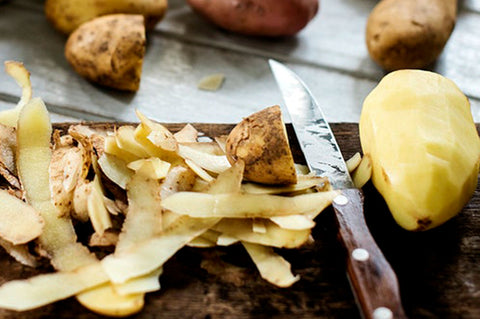Teaching children about bacteria and how viruses work can be a tricky task for parents. Firstly, how do you explain to a young child that something they can’t see, hear, smell or touch is there at all?
And secondly, how do you tell them about all these nasty germs without giving them sleepless nights?
The answer is to make learning about bacteria fun! We’ve put together our favourite ideas that we hope will provide some inspiration and help keep your family protected.
THE PEPPER BOWL EXPERIMENT
This is a great visual way to show children the effect of soap on germs and can be done using items from your kitchen cupboard at home. Here’s how it’s done:
- Grind black pepper into a shallow dish of water so it’s floating on the surface.
- Tell our child the pepper represents the nasty germs.
- Ask your child to dip their finger into the water and see what happens. The ‘germs’ – or particles of pepper – will stick to their finger.
- Next, ask your child to put their finger into some liquid soap and then try the experiment again.
- The ‘germs’ will move away from their finger!
SPREADING LIKE WILD ‘FLOUR’
Showing how quickly germs can spread onto surfaces and things we touch is another important lesson and one that can be demonstrated using flour, icing sugar or – if you’re feeling brave and don’t mind a bit of mess – glitter. Whatever your choice of substance, tell your child to imagine that it’s germs.
Ask your child to put their hand into the flour, icing sugar or glitter. Then, let them spend some time playing with their toys (plastic or wooden toys, like LEGO, work best for this) before they wash their hands.
After a few minutes, examine together how much of the ‘germs’ have transferred onto their toys. They’ll then be able to see just how quickly germs can spread onto different surfaces.

MAKE HAND WASHING CHILDSPLAY
Singing a song while washing hands can help children time their handwashing activity and make sure they’re doing it for the full 20 seconds. It can also make it fun and seem much less like a chore.
Pick one of their favourites or a song they know well, for example singing the ‘Happy Birthday’ song twice lasts the correct amount of time - or you could even come up with a little song and routine yourselves! As long as it lasts for 20 seconds and gives little hands a thorough clean, it’s up to you.
Follow NHS guidelines on the best way to wash your hands to make sure you’re not just rubbing your hands together; rub the back of hands and in between fingers and thumbs, under nails and wrists.
Another tip is to set an alarm to sound regularly throughout the day washing alarm! Choose a song that your child loves, for example, the Pepper Pig theme tune, and tell them when they hear the sound, it’s time for everyone to wash their hands. Your alarms can even be set to go off just before scheduled meal and snack times too.

THE SPUD TEST
This is another easy and cheap way to show the power of germs using just a potato and a few sealed plastic bags.
- Peel a raw potato and cut it into two sections.
- With the first section, pass it around your family – let anyone who hasn’t got freshly washed hands hold onto it for a few seconds, then place this section in a clear plastic bag and label it ‘dirty hands’.
- Then ask everyone to wash their hands.
- With the second section of potato, do the same again! This time, label the bag ‘clean hands’ as everyone who touched it had washed their hands beforehand.
- Place both bags in a dark room or cupboard for a few days, then take them out and show your children the difference.
The potato in the bag labelled ‘dirty hands’ will have gone bad very quickly and will be much ‘ickier’ than the one that was touched with nice clean hands.

BRING GERMS INTO YOUR HOMESCHOOLING LESSONS
Incorporate learning about germs into your homeschooling lessons, you never know what you’ll also learn along the way too!
For younger children, arts and crafts can help them visualise germs. Use handprints on paper to create different types of germs or use play dough with earbuds stuck into it to give an accurate representation of what they look like under a microscope.
You can even name your pathogen family, for example, ‘Bob the bacteria’ or ‘Veronica the virus’!
Hang the decorative germs you’ve created above the sink or on the fridge to help remind them to spend time washing their hands throughout the day.
For older children, set them the challenge of writing a report all about bacteria, or ask them some key questions about bacteria and ask them to find out the answers. For example:
- What are bacteria?
- Are all bacteria bad for us?
- Why do some bacteria make us feel poorly?
- How long do bacteria live on surfaces?
- What environment do bacteria love best?
If your children are old enough, you can even ask them some more complicated questions, such as:
- What is the difference between bacteria and a virus?
- What is a microorganism?
- What is a pathogen and what are the five main types of pathogen?



